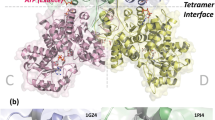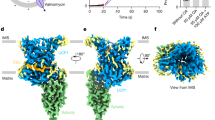Abstract
It is known that one of the reasons, leading to the development of neuromuscular diseases, including Parkinson’s disease, is damage of the mitochondrial NADH-dehydrogenase. Perhaps, it happens when NADH-dehydrogenase loses connection with its coenzyme – flavine mononucleotide (FMN) that occurs at various influences on the enzyme. Previously, we have developed a method, based on fluorescence spectroscopy, to monitor the rate of exit of FMN from isolated mitochondria to solution. Also, we obtained the data that this process is blocked by the enzyme substrate – NADH or by the product – NAD. Recently, we found that this process is strongly blocked by adenine analogs of NAD, contained phosphates: ATP, ADP, and AMP. Adenosine phosphates are able to stabilize the FMN molecule in NADH-dehydrogenase. Using fluorescence spectroscopy and photocolorimetry, we have tested also other natural purine compounds - cAMP, cGMP, GMP, GDP, GTP, IMP, inosine, guanine, and caffeine. It is found that such derivatives of guanine as GMP, GDP, and GTP can prevent the release of FMN into solution. Guanine, cGMP, cAMP and caffeine did not prevent this process. The obtained data allow understand the mechanism of mitochondrial diseases, involving damage of mitochondrial NADH-dehydrogenase, and may help in development of medicines for treatment of these diseases.




Similar content being viewed by others
Abbreviations
- NADH:
-
Nicotinamide dinucleotide
- ATP:
-
Adenosine triphosphate
- ADP:
-
Adenosine diphosphate
- AMP:
-
Adenosine monophosphate
- FMN:
-
Flavin mononucleotide
- cAMP:
-
Cyclic adenosine monophosphate
- GTP:
-
Guanosine triphosphate
- GDP:
-
Guanosine diphosphate
- GMP:
-
Guanosine monophosphate
- p-NTV:
-
Para-nitro-tetrazolium-violet
- UDP:
-
Uridine diphosphate; CDP, cytosine diphosphate
- CDP:
-
Cytosine diphosphate
References
Seo BB, Nakamaru-Ogiso E, Cruz P, Flotte TR, Yagi T, Matsuno-Yagi A (2004) Functional expression of the single subunit NADH dehydrogenase in mitochondria in vivo: a potential therapy for complex I deficiencies. Hum Gene Ther 15(9):887–895
Varghese M, Pandey M, Samanta A, Gangopadhyay PK, Mohanakumar KP (2009) Reduced NADH coenzyme Q dehydrogenase activity in platelets of Parkinson’s disease, but not Parkinson plus patients, from an Indian population. J Neurol Sci 279(1–2):39–42
Sokolova IB, Vekshin NL (2008) The loss of NADH dehydrogenase flavin mitochondrial complex. Biophysics (Moscow) 53(1):73–77
Vekshin NL (2009) Fluorescence Spectroscopy of Biomacromolecules. Photon-vek, Pushchino
Beljakovich AG (1990) The study of bacteria and mitochondria using of tetrazolium salts of p-NTF. ONTI NCBI, Pushchino
Sharova IV, Vekshin NL (2004) Rotenone-insensitive NADH oxidation in the mitochondrial suspension carried NADH dehydrogenase fragment of the respiratory chain. Biophysics (Moscow) 49(5):814–821
Vekshin NL (1988) Spectrophotometric determination of protein in biological standard suspensions. Biological Sci 4:107–111
Zinina AN, Vekshin NL (2008) Fluorimetric comparison protomitohondry and mitochondria. Biol Membr (Moscow) 25(6):480–487
Vekshin NL (2010) Photometric and fluorimetric study of liver protomitohondry young and adult rats. Biol Membr (Moscow) 27(5):424–429
Galante YM, Hatefi Y (1979) Purification and molecular and enzymic properties of mitochondrial NADH dehydrogenase. Arch Biochem Biophys 192:559–568
Dooijewaard G, Slater EC, Van Dijk PJ, De Bruin GJ (1978) Chaotropic resolution of high molecular weight (type I) NADH dehydrogenase, and reassociation of flavin-rich (type II) and flavin-poor subunits. Biochim Biophys Acta 503:405–424
Almeida T, Durante M, Melo AMP, Videira A (1999) The 24-kDa iron-sulphur subunit of complex I is required for enzyme activity. Eur J Biochem 265:86–92
Cremona T, Kerney EB (1964) Studies on the respiratory chain-linked reduced nicotinamide adenine dinucleotide dehydrogenase. J Biol Chem 230(7):328–333
Okun JG, Zickermann V, Zwicker K, Schagger H, Brandt U (2000) Binding of detergents and inhibitors to bovine complex I – a novel purification procedure for bovine complex I retaining full ingibitor sensitivity. Biochim Biophys Acta 1459:77–87
Frolova MS, Vekshin NL (2014) NADH-dehydrogenase stabilization of mitochondrial adenosine. Biol Membr (Moscow) 31(1):1–7
Grivennikova VG, Vinogradov AD (2003) Mitochondrial complex I. Successes Biol Chem (Moscow) 43:19–58
Vinogradov AD (1998) Catalytic properties of the mitochondrial NADHubiquinone oxidoreductase (Complex I) and pseudo-reversible active/inactive enzyme transition. Biochim Biophys Acta 1364:169–185
Grivennikova VG, Vinogradov AD (2006) Generation of superoxide by mitochondrial Complex I. Biochim Biophys Acta 1757:553–561
Albracht SPJ, Mariette A, De Jong P (1997) Bovine-heart NADH: ubiquinone oxidoreductase is a monomer with 8 Fe-S clusters and 2 FMN groups. Biochim Biophys Acta 1318:92–106
Bubnova TV (2009) Permitted medicines and dietary supplements. Univ. of Belinsky, Penza State
Acknowledgments
This work was supported by the grant of Presidium of Russian Academy of Sciences “Fundamental science – to medicine, 2013.” The authors also are grateful to A.V. Braslavskyi (Taiwan) for financial support.
Author information
Authors and Affiliations
Corresponding author
Rights and permissions
About this article
Cite this article
Frolova, M.S., Vekshin, N.L. Stabilization of NADH-dehydrogenase in Mitochondria by Guanosine Phosphates and Adenosine Phosphates. J Fluoresc 24, 1061–1066 (2014). https://doi.org/10.1007/s10895-014-1385-0
Received:
Accepted:
Published:
Issue Date:
DOI: https://doi.org/10.1007/s10895-014-1385-0




